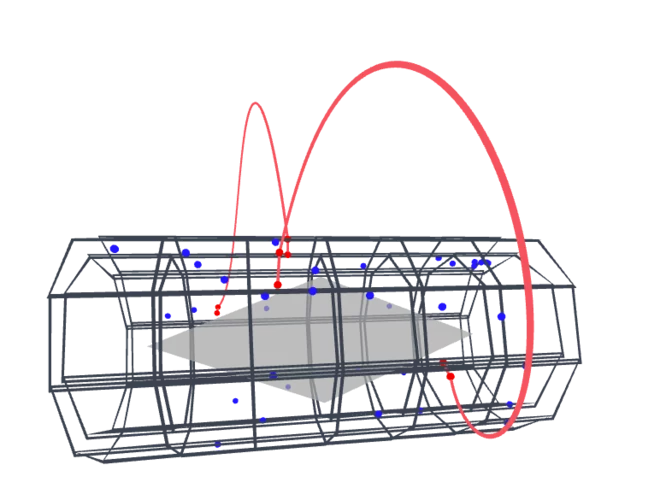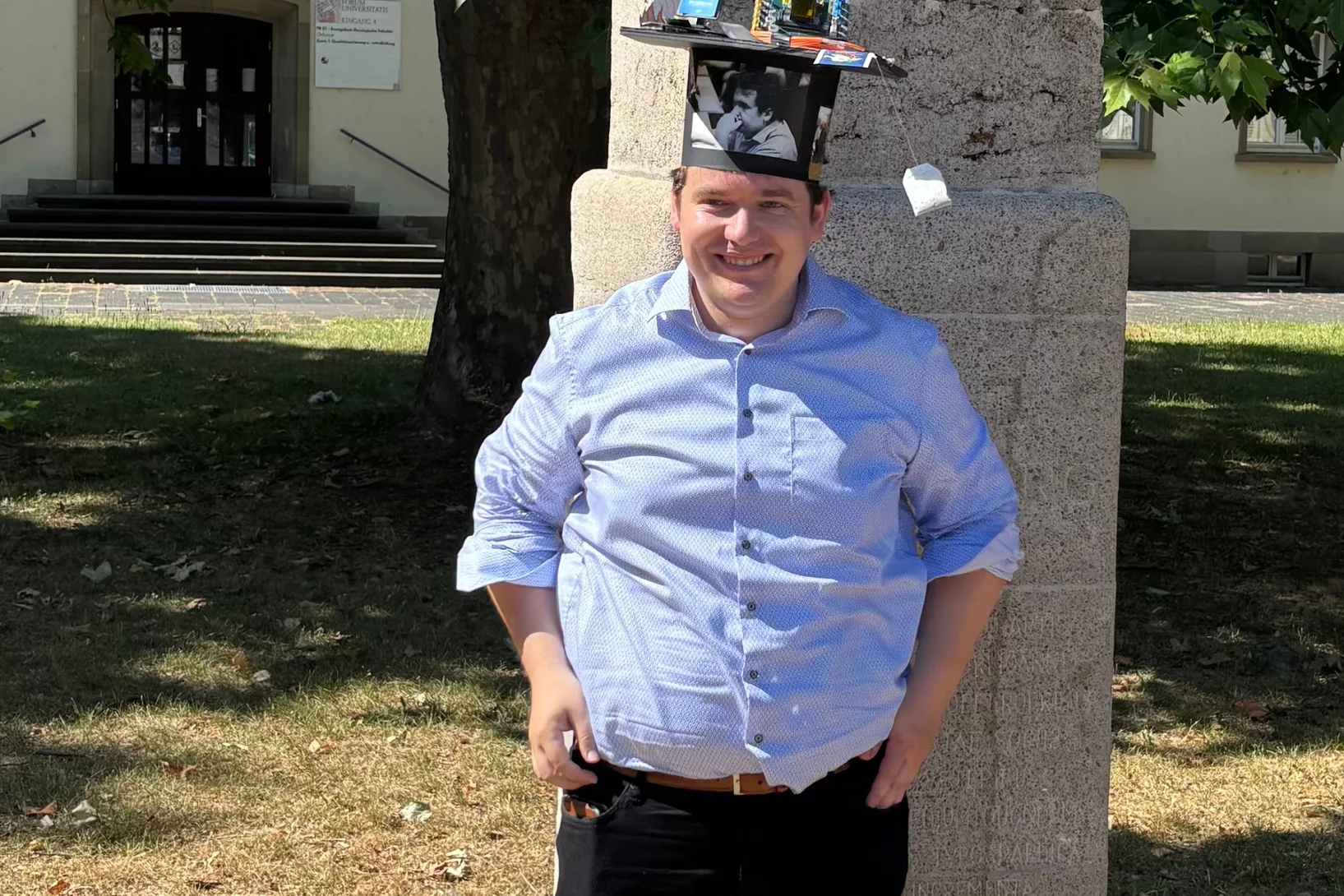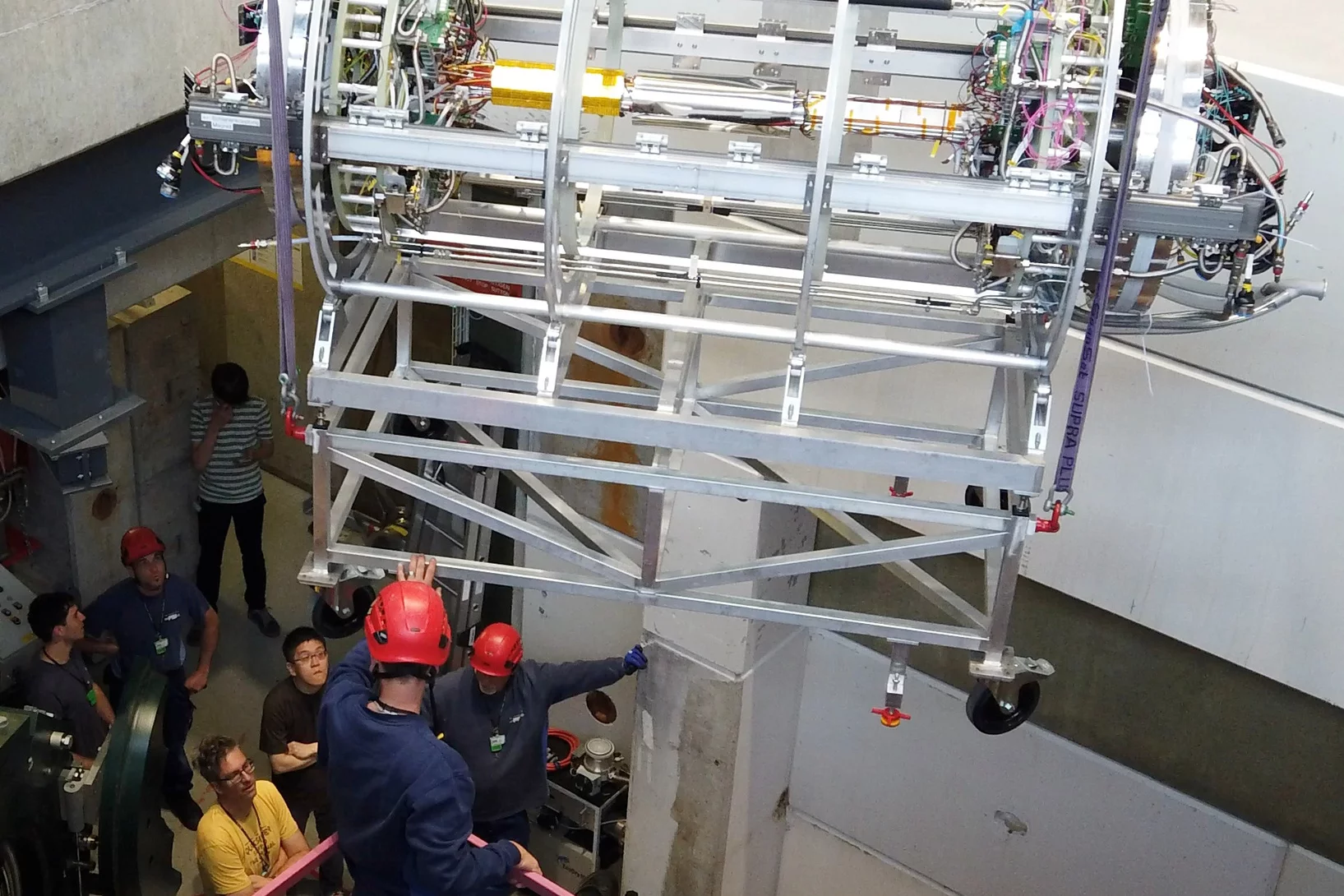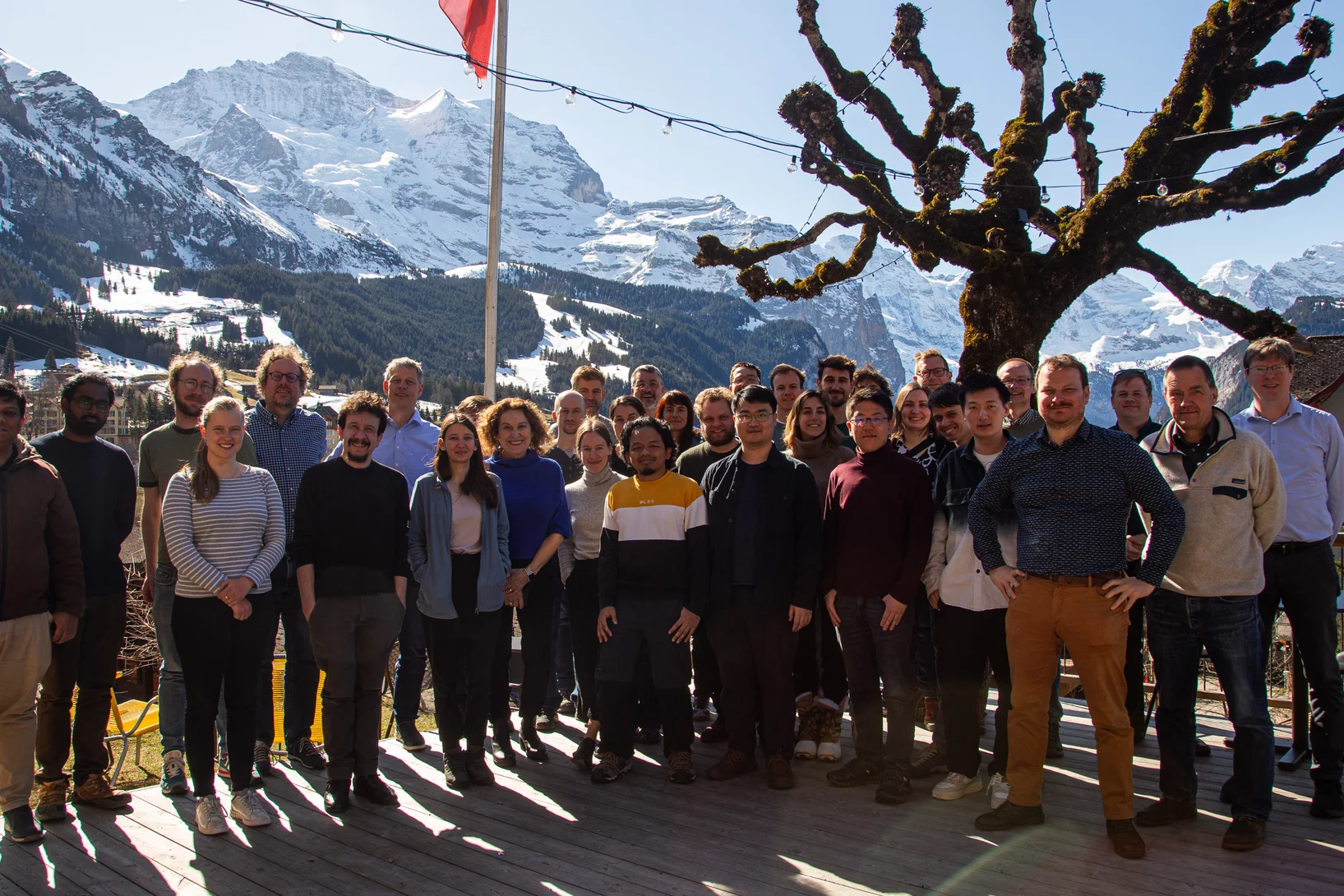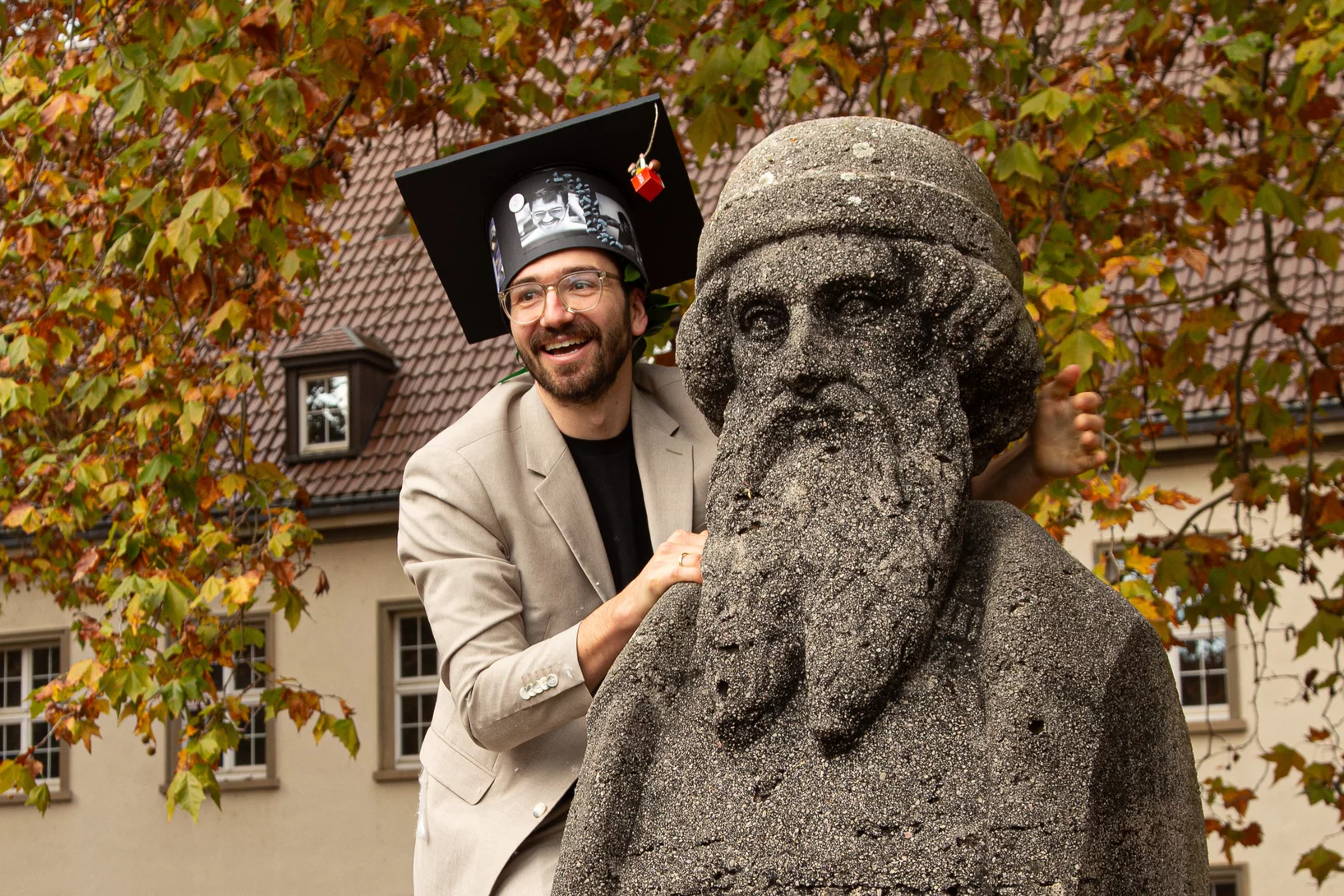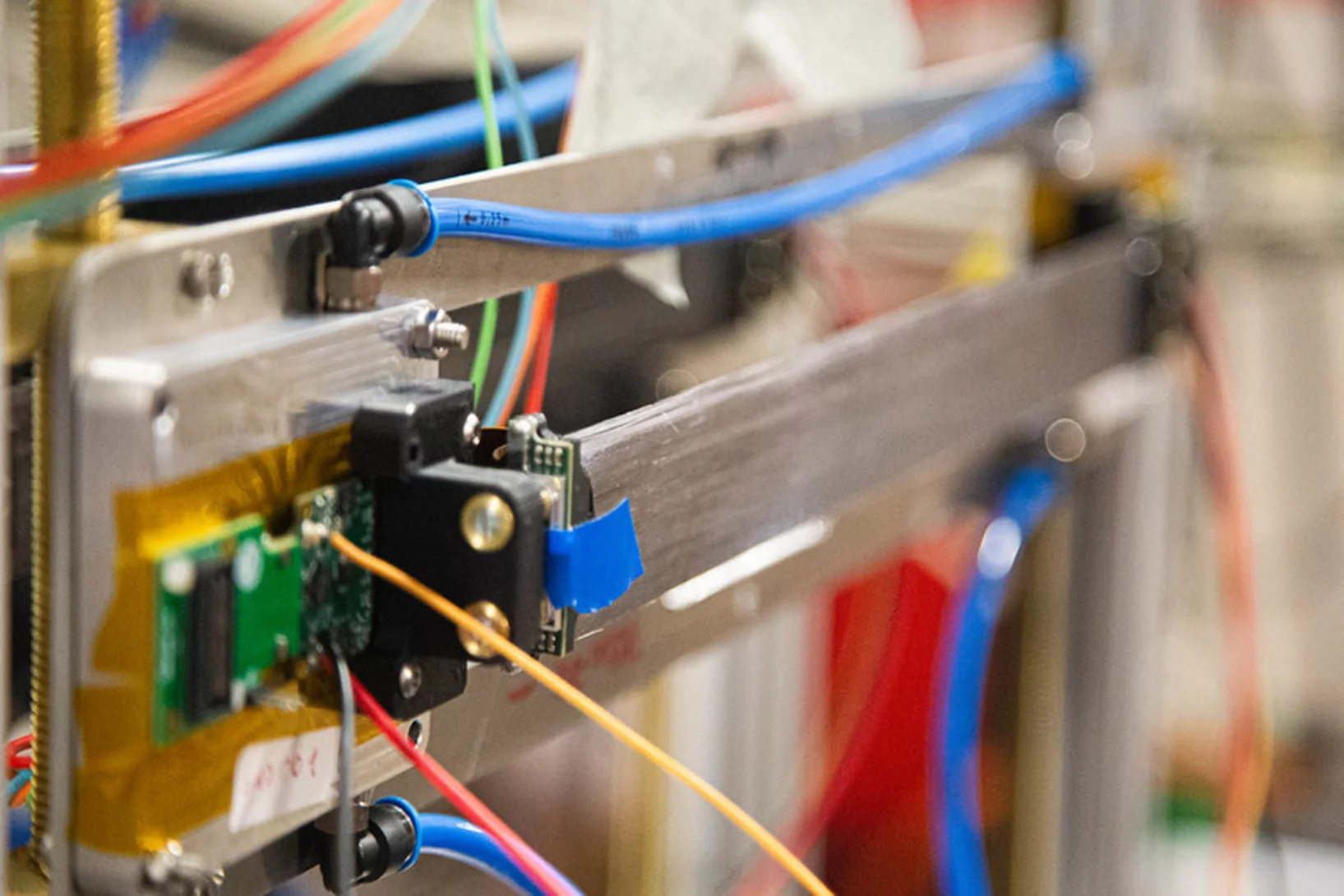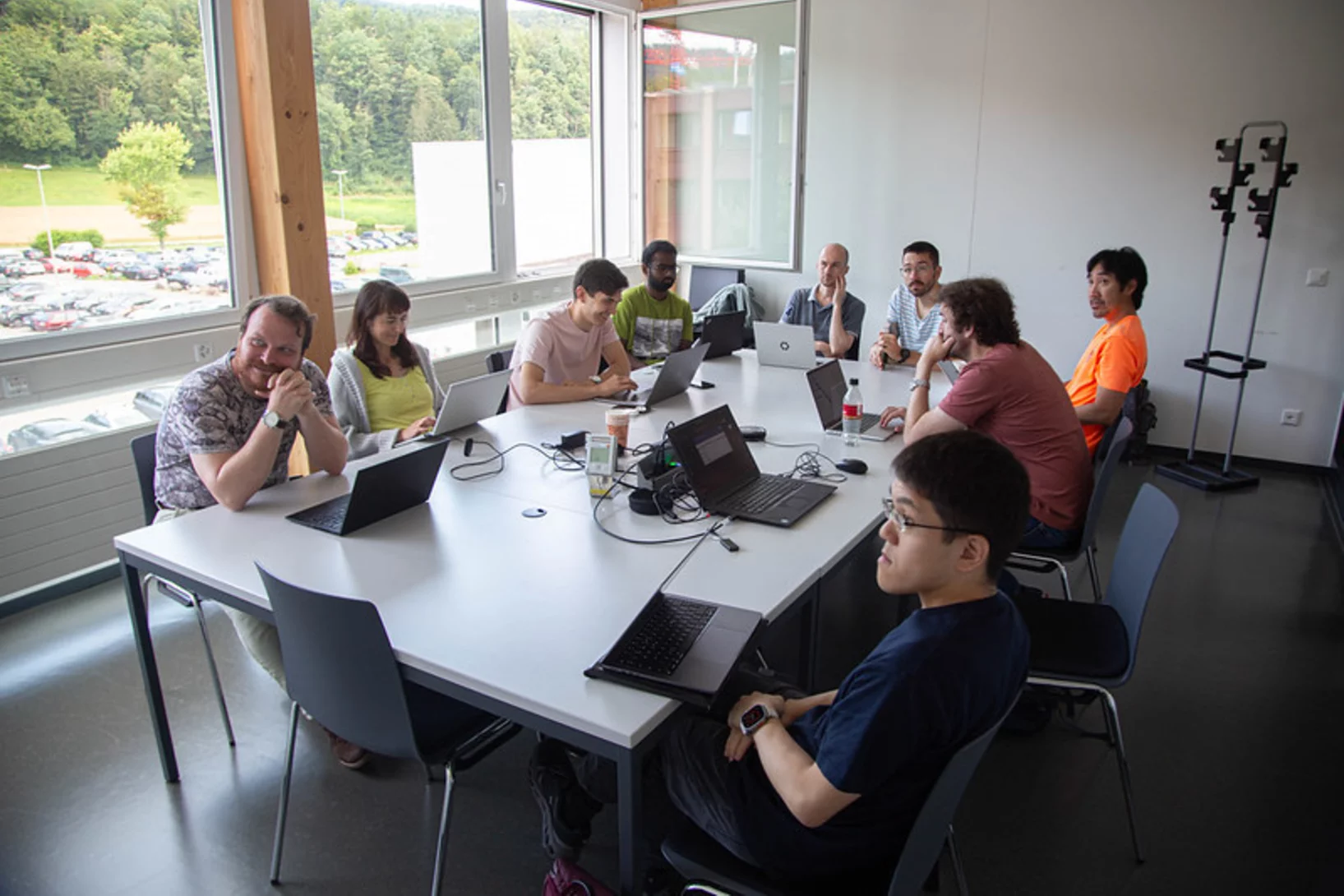Mu3e Collaboration Meeting at ETH Zürich
The Mu3e collabaoration met at ETH Zürich to discuss the lessons learned from the June beam time and make plans for the rest of the year and 2026.
Successful Mu3e Beam Time
In June, Mu3e took three weeks of muon beam at PSI. For the first time we operated the vertex pixel detcteor, scintillating fibre and scintillating tile modules together in the experimental environment.
Martin Müller defends his PhD on the Mu3e Data Acquisistion Sytem
Martin Müller has defended his PhD on the data acquisition system for Mu3e at Johannes Gutenberg University Mainz. He has developed firmware for synchronizing the detector at the few picosend level and configuring thousands of pixel chips with hundreds of millions of tune values in a few seconds.
Mu3e craned into the magnet for June test run
Today the Mu3e detector was craned from the statging area to the piE5 beam area, where we plan to take beam with final detector elements from all three subdetectors in June. - With video!
Collaboration Meeting in Wengen
The Mu3e collaboration met in Wengen for four days of intensive discussion of recent progress, detector construction and installation as well as plans for the coming months.
Marius Köppel defends his thesis on the Mu3e Data Acqusistion System
Marius Köppel has defended his PhD on the data acquisition system for Mu3e at Johannes Gutenberg University Mainz.
Ian Shipsey
The Mu3e collaboration is deeply saddened to by the loss of our colleague and friend Professor Ian Shipsey, Head of Department of Physics in Oxford and co-lead of the Oxford Mu3e group.
Beam test of the scintillating fibres at MAMI un Mainz
The Mu3e scintillating fibre detector was tested using the electron beam of MAMI at the institute of nuclear physics in Mainz. The MuPix pixel detectors were used as a refernce.
Fourth Data Challenge
The Mu3e data challenges aim at establishing the data processing and storage procedures as well as the online monitoring tools. To this end, we use simulated data to test all involved systems and further develop the code. In the forth edition, we aimed at incorporating the farm FPGAs, GPU selection and advanced subdetector monitoring tools.

